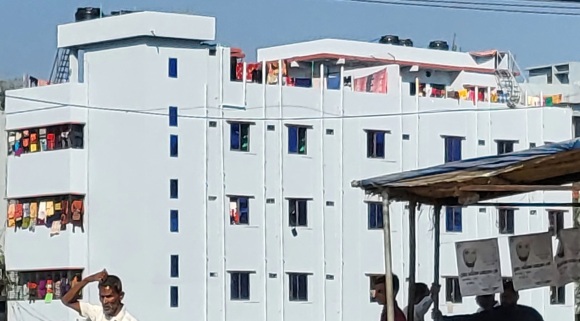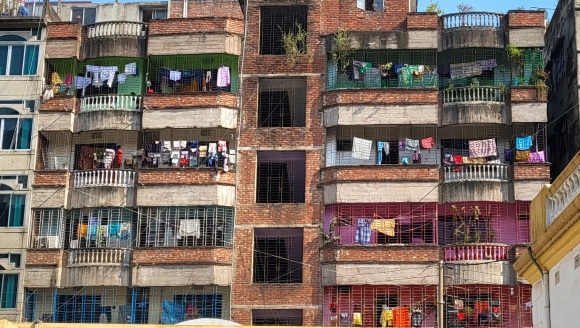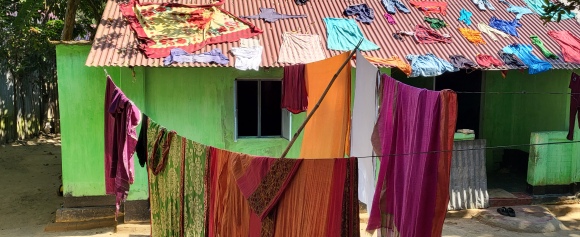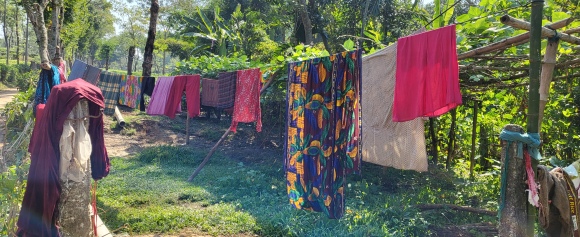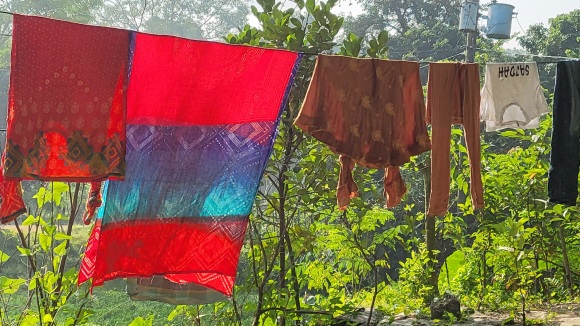
Murale Reconnaissance territoriale par Quentin “Que Rock” Commanda, St. Lawrence Centre for the Arts, 27 Front St. E, Toronto.
Après plusieurs années de recherche, j’ai enfin trouvé un texte de Reconnaissance territoriale qui exprime mes sentiments en tant que descendante de colons Français en Nouvelle-France au Canada. Comme d’autres Reconnaissances territoriales, ce texte dit ce que tous les colons devraient savoir à propos des autochtones déplacés des territoires qui les soutenaient par les occupations successives de la France et de la Grande Bretagne aux 17e et 18e siècles.
Cette Reconnaissance territoriale exprime ensuite ce qui manque dans plusieurs de ses semblables : comment aller de l’avant ensemble dans la paix, le respect et la bonté.
Je souhaite reconnaitre Tkaronto, terme Mohawk signifiant « place dans l’eau où les arbres se dressent ». Je vis et je travaille sur le territoire traditionnel des nations parlant l’Haudenosaunee, incluant les Hurons-Wendats, les Senecas et les Mohawk. Les nations qui parlent l’Haudenosaunee sont ici depuis des temps immémoriaux et ont été rejointes plus récemment par les Mississaugas du Crédit.
Cette reconnaissance territoriale signifie qu’en vivant et travaillant ici, nous avons tous une responsabilité envers l’environnement, et envers chacun de nous, de nous traiter mutuellement, et de traiter l’environnement, avec paix et respect. Ceci signifie que nous sommes responsables d’honorer, de renouveler, et de maintenir continuellement les valeurs et les liens élaborés dans les anciennes ententes faites par les peuples venus d’ailleurs avec les peuples autochtones.
Aujourd’hui, Toronto abrite de nombreux autochtones ainsi que des gens venus s’y établir de partout au monde. Agissons ensemble dans une atmosphère de respect et de paix pour accomplir conjointement du bon travail avec de bons esprits. Commençons à bâtir des liens plus sains entre nous tous et les espaces que nous habitons à Tkaronto, Ontari:io, Kanata. Gardons nos esprits unis par la bonté.
Nia:wen. Merci.
Adapté du texte composé par la talentueuse Dawn Maracle – mère Mohawk, consultante, écrivaine, orateur, maître de cérémonie, voyageuse, photographe, danseuse, muse, et survivante du cancer – pour l’organisme TO Live.
© Dawn Maracle, version anglaise
Tous les commentaires respectueux sont bienvenus

